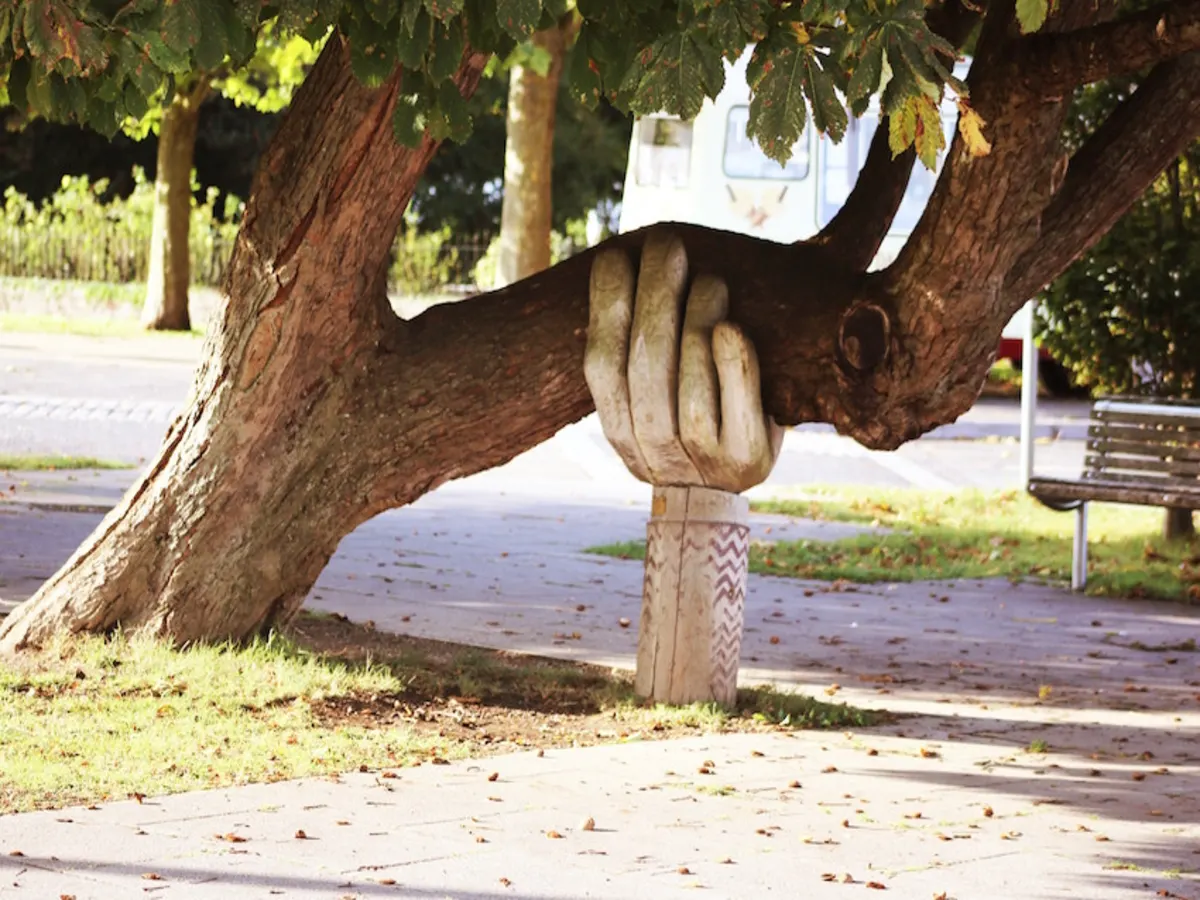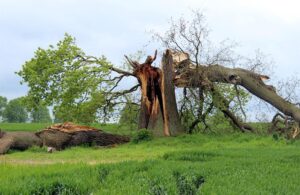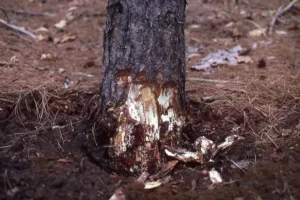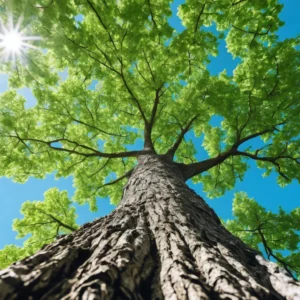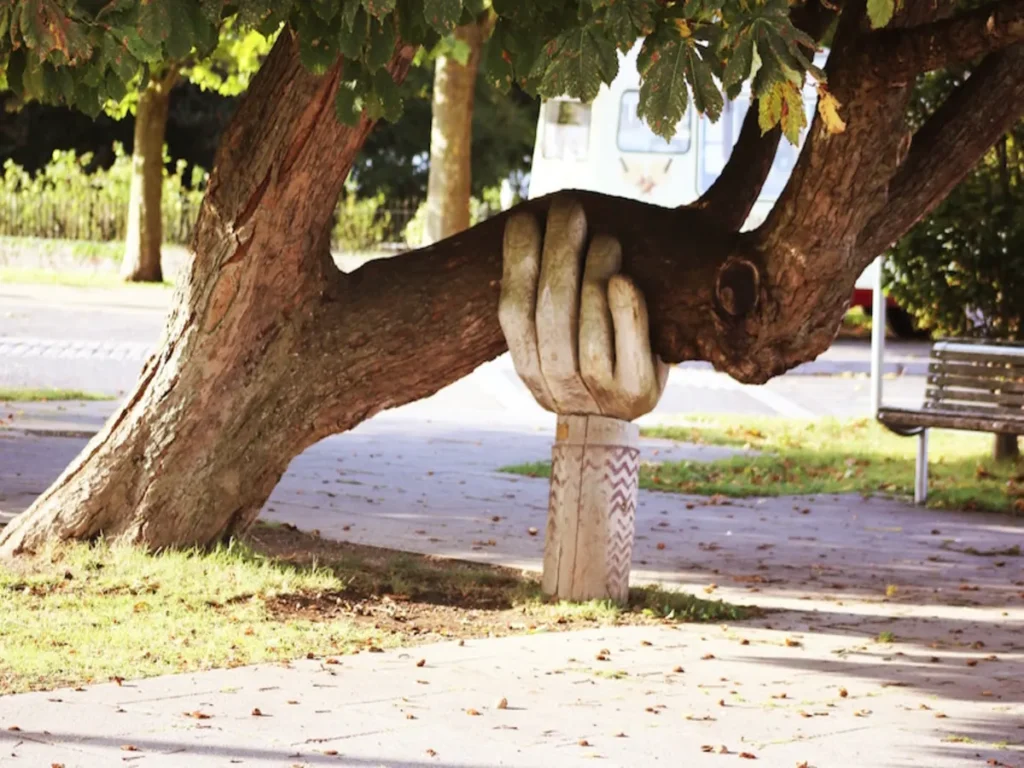
See if your tree needs to be removed and why. We all agree that trees add value and beauty to a property. However, sometimes trees become unhealthy or get damaged. It’s good to recognize the warning signs early. The tree may need a removal to prevent accidents and property damage.
In many cases a tree just needs a visual inspection to see something is wrong. If your worried about the tree’s health be sure to call your tree guy to take a look. It’s better to be safe than sorry.
10 Key indicators that a tree needs removed.
Here are 10 key Indicators that a tree will require immediate attention. Neglecting a damaged or diseased tree can result in serious issues. I have seen many trees that have fallen on cars and property. Some have even come close to hitting people walking by. Usually there are tell-tale signs of trouble on the horizon.
Let’s explore the 10 signs your tree needs removed immediately:
#1 Dead or Dying Branches
Dead or dying branches are a clear signal that a tree is in distress. These branches appear dry, brittle, and are often devoid of leaves, even during the growing season. Left unattended, dead branches can break off and cause significant damage.
Tree climbers, arborists and groundmen often deal with widow-makers. When branches break off in the canopy of a tree they become dangerous. Never stand under a tree with a branch broken off. These widow-maker limbs can come crashing down at any time. It’s best to let the pros handle it!
Need a Tree Trimming Service?
Removing a tree with dead branches ensures safety and prevents further deterioration of the tree structure.
Learn More: Understanding the Risks and Ensuring Safety
#2 Tree is Leaning Noticeably
![[Aidan Stewart] from [https://www.urbanforestdweller.com/lean-on-me/] leaning tree needs removed](https://www.ohiotreehugger.com/wp-content/uploads/2024/09/leaning-tree-needs-removed-1.webp)
A healthy tree should grow vertically. If you notice that your tree is leaning to one side, it could be due to root damage or soil erosion. This unnatural tilt is a major warning that the tree may be unstable.
Removing the tree is optional, some live many years like this. It’s best to keep an eye on it from time to time.
Leaning trees poses a serious risk of falling, especially during strong winds or heavy rain. It’s important to have the tree professionally assessed and removed if necessary. They can be fixed if you get to them when their young enough.
#3 Damaged or Exposed Roots
The health of a tree’s roots directly affects its stability. Signs of root damage include visible roots at the surface, heaving soil, or fungal growth near the base of the tree. These are indicators that the tree may no longer have the support it needs.
The tree might need more dirt around the roots. In some areas the dirt gets washed away. This will expose the roots to possible harm.
When roots are compromised, the tree is at risk of toppling over, especially during adverse weather. Removal may be the safest option to prevent potential hazards.
Did you know Ohio Tree Hugger provides Emergency Tree Service? Contact us for a fast FREE estimate for emergency tree service.
#4 Fungal Growth at the Base
If you notice mushrooms or other fungal growth at the base of your tree, it’s often a sign of internal decay. Fungi thrive on rotting wood, which means your tree may be deteriorating from the inside.
Removing a tree with fungal growth can prevent sudden collapse and reduce the risk to your property.
If your tree needs to be removed immediately feel free to fill out the contact form in the sidebar. ![]()
#5 Cavities or Hollow Areas in the Trunk
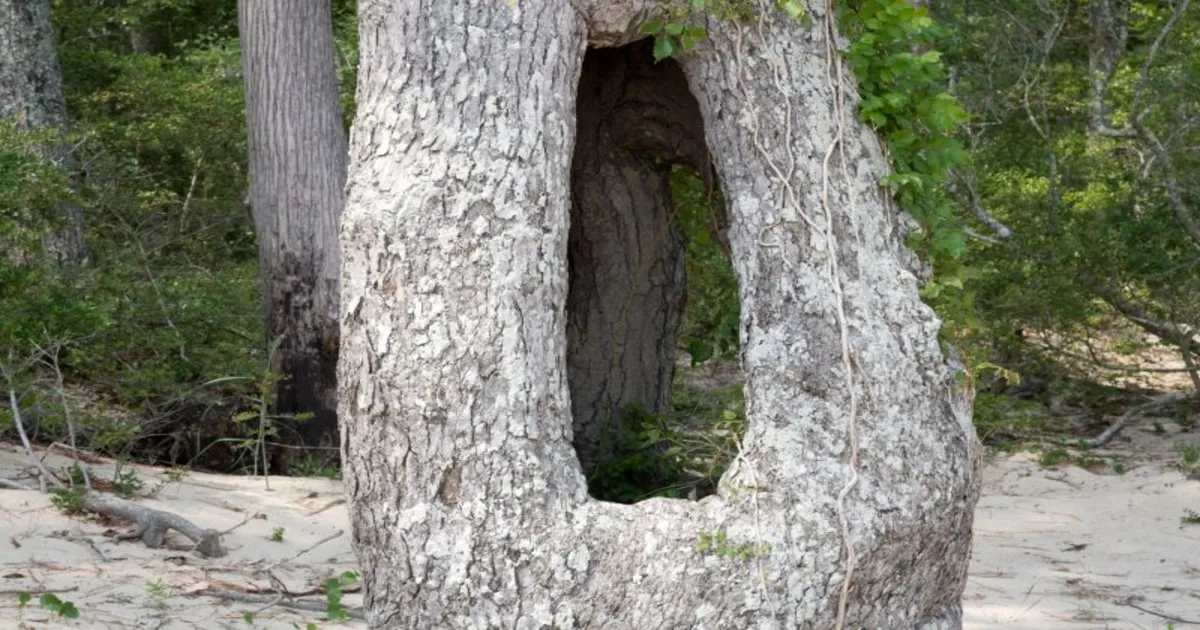
Cavities or hollows in a tree trunk are often signs of decay. Some trees can sometimes live with hollows for years. Significant cavities weaken the overall structure, making the tree more vulnerable to falling.
You Should Definitely Remove It:
Hollow trees are at greater risk of breaking, especially during storms. Removing a tree with a large cavity is important to maintain the safety of your home and property.
#6 Cracks or Splits in the Tree Trunk
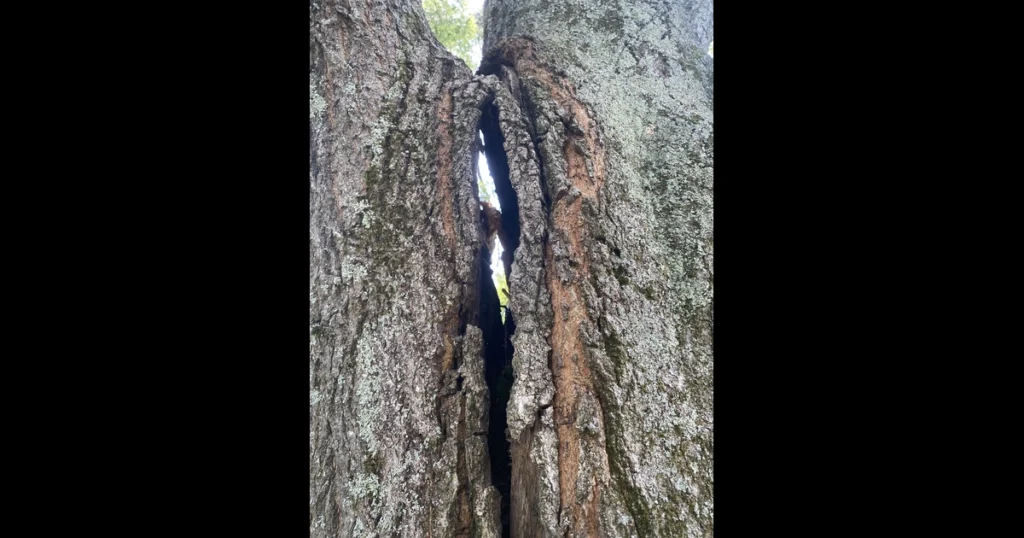
Large cracks or splits in the trunk indicate that the tree is under significant stress. These splits weaken the structure and can lead to breakage, particularly during strong winds or storms.
You Should Remove It:
A tree with a cracked trunk is unstable and should be looked at immediately. Removal may be necessary to prevent the tree from breaking apart unexpectedly.
#7 Excessive Shedding of Leaves
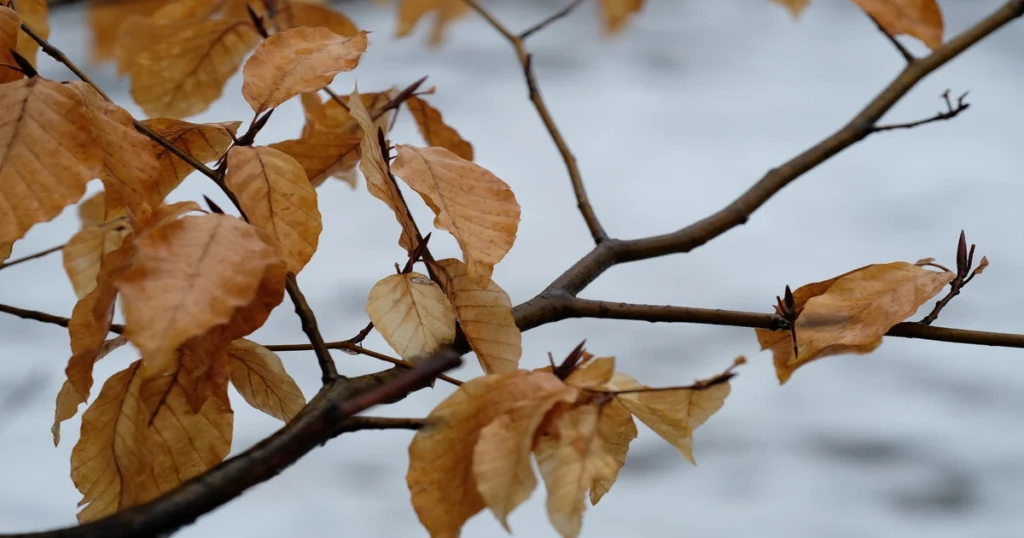
If your tree is losing more leaves than usual, especially outside of its normal shedding season, it could be a sign of disease or internal damage. Pay attention to uneven shedding, as this often indicates that the tree is struggling.
We Suggest You Remove it, However, this is optional because trees can make come backs. Just keep an eye on it in the spring to see if the tree gets better.
Excessive leaf loss suggests underlying health issues that could weaken the tree. Removal may be necessary to prevent further decline or the spread of disease to other plants in your yard.
#8 Weak or Multiple Trunk Unions
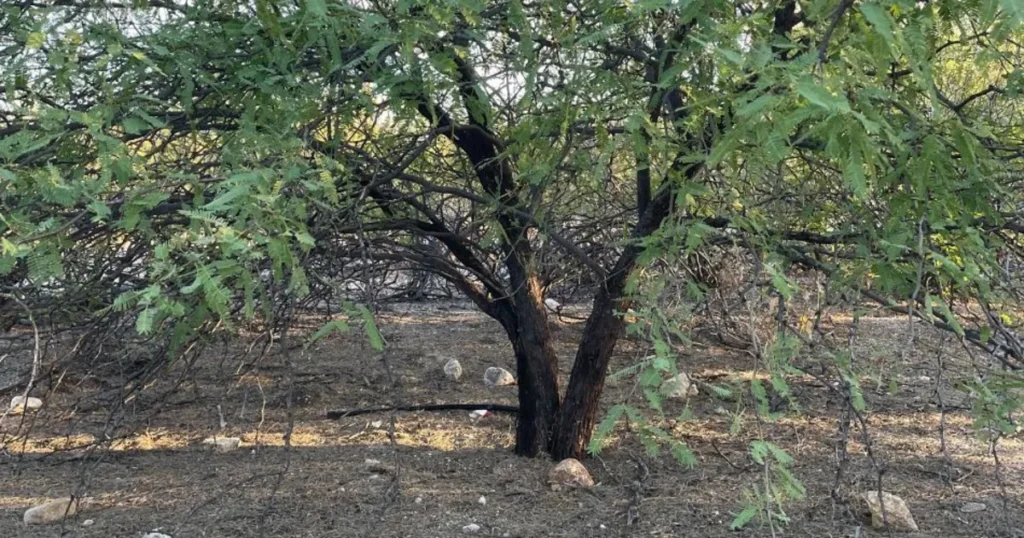
Trees with multiple trunks or branches that are closely joined can form weak unions. These unions are vulnerable to splitting, especially in strong winds or heavy rain. Usually a bad spot in one trunk means trouble for the others. This weak union could break in the next storm.
An inspection of the trunk and the union section is necessary. The inspection consists of looking for cracks, rotten wood, fungi and plants growing in the union.
It’s optional to remove trees with multiple trunks. Is it hurting anything?
Weak branch unions can cause large sections of the tree to break off, posing a risk to your property. Removing a tree with weak unions can help prevent property damage and injuries.
#9 Insect Infestation
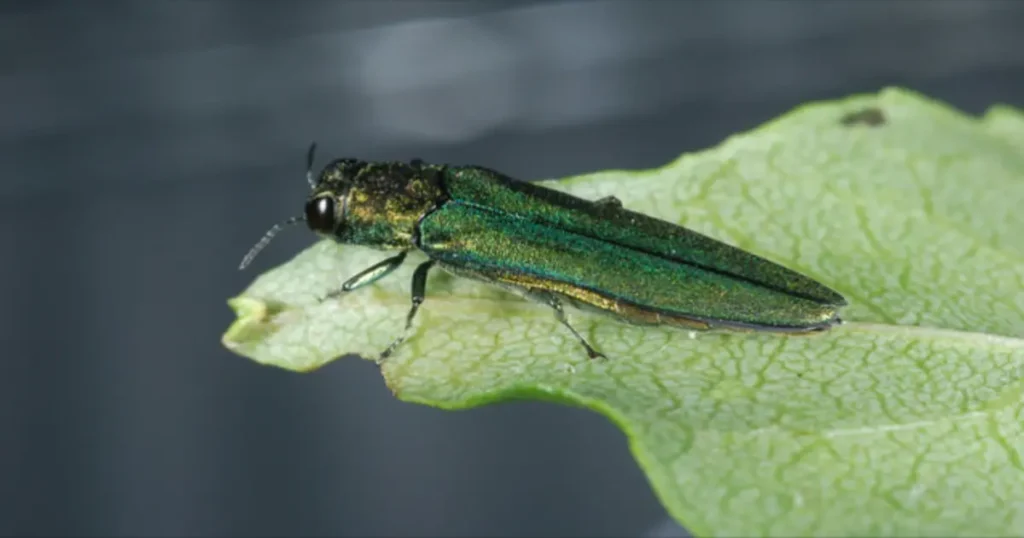
Pests like termites, beetles, or emerald ash borers are a nuisance. These pests can cause serious damage to your tree. Signs of an infestation include holes in the bark, sawdust-like residue at the base, or visible pests crawling on the tree.
Yes, It’s Necessary Remove It ASAP:
Insect-infested trees are prone to internal decay and can quickly become unstable. Early removal can prevent the infestation from spreading to other trees in your yard.
Learn More: How Bark Beetles and Other Insects Harm Trees
#10 Significant Storm Damage

Storms can cause serious damage to trees, including broken branches, cracks in the trunk, and even uprooting. After severe weather, it’s important to inspect your trees for damage that could compromise their stability.
Remove it! Once they are severely damaged they rarely come back.
A storm-damaged tree may not recover fully and can pose a risk if left standing. It’s best to consult with an arborist to determine whether removal is necessary for safety.
Learn More From The Leader Of Tree Care Products: Tips for Tree Care and Storms: Before, During, and After
Conclusion: Take Action Before It’s Too Late
If your tree is displaying any of these warning signs, it’s crucial to act quickly. Trees that are in poor health or structurally unstable can become hazards, causing property damage or personal injury. Consulting with a certified arborist is the best way to assess the situation and ensure that the tree is removed safely.
By staying diligent and addressing these signs early, you can maintain a safe and beautiful landscape for years to come.
Check out this article: Top Ten Ways To Keep Your Trees Healthy
